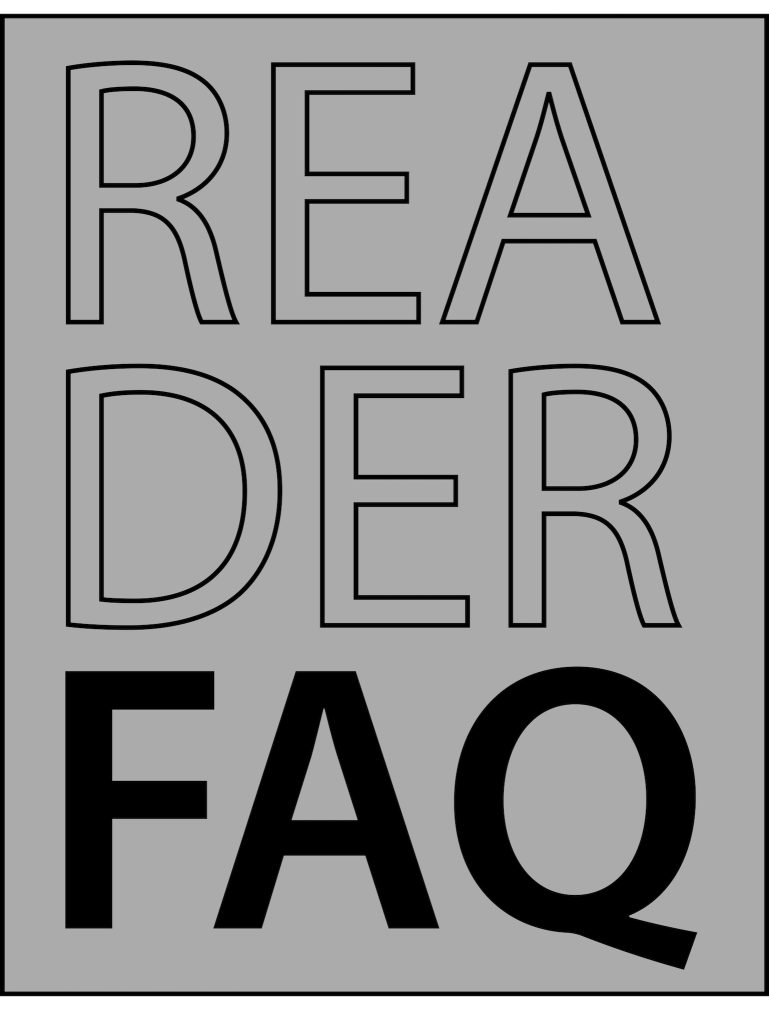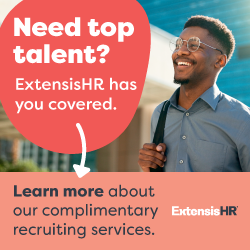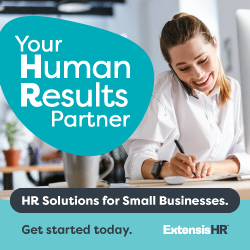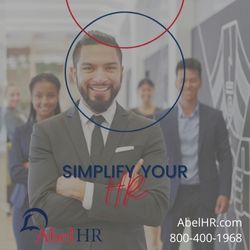Listen to our in-depth podcast discussion on PEO Services and The Future of Work Part 1 on Spotify: PEO Company Podcast RSS Feed
In today’s rapidly evolving business landscape, organizations face unprecedented challenges in human resource management. Professional Employer Organization (PEO) services offer a strategic solution that transforms how companies handle their workforce needs. As we examine findings from “The Future of Work Part 1” podcast and recent workplace studies, we’ll explore how PEO services provide the expertise, technology, and support needed to thrive in this new era.
Current Business Challenges Driving PEO Service Adoption
Before diving into the specifics of PEO services, it’s crucial to understand the complex challenges driving organizations to seek strategic HR partnerships. According to SAP’s comprehensive analysis of workplace trends, organizations face unprecedented pressures in several key areas:
The AI Revolution
Recent research shows that 39% of HR leaders identify AI and technology adoption as their primary concern for the next decade. As Mary Alice Vuicic, Chief People Officer at Thomson Reuters, explains, “AI is going to be the fastest technological transformation we’ve seen in our lifetime. So, change management to help people understand how they need to adapt, how they develop the skills and the way that companies are organized so that org structure is more dynamic” (People Managing People, 2024).

Skills Gap Crisis
With 16% of HR leaders citing skills shortages as a major concern, organizations struggle to maintain competitive advantage through talent development. Victoria Myers, Global Head of Talent Management at Amdocs, emphasizes that “In 10 years, who’s to say what innovations will have occurred and how they’ll reshape workforce dynamics and the job requirements?” This uncertainty requires a more strategic approach to workforce development.
Compliance Complexity
The regulatory landscape continues to evolve at an unprecedented pace. From pay transparency laws to privacy regulations, organizations face increasing compliance burdens that require specialized expertise to navigate effectively.
Workforce Expectations
Modern employees demand more than just competitive salaries. They seek comprehensive benefits packages, professional development opportunities, and flexible work arrangements. Meeting these expectations while managing costs presents a significant challenge for many organizations.
Understanding PEO Services: A Comprehensive Guide
Before diving into specific benefits, let’s understand what PEO services entail. A Professional Employer Organization enters into a co-employment relationship with your company, sharing employer responsibilities and liabilities. Think of it as having an expert co-pilot for your business – while you maintain control of your business operations and strategy, the PEO handles the complex navigation of HR, benefits, compliance, and workforce management.
The Co-Employment Relationship Explained
Many business leaders wonder about the practical implications of co-employment. Here’s how it works: Your employees remain under your direct management for day-to-day operations and business decisions, while the PEO becomes the employer of record for tax and compliance purposes. This arrangement offers several key advantages:
- Risk Mitigation: The PEO assumes significant employment-related liabilities
- Administrative Efficiency: HR tasks are handled by dedicated experts
- Enhanced Benefits: Employees gain access to fortune 500-level benefits packages
- Compliance Management: Stay current with evolving regulations across jurisdictions
Learn More A Strategic Guide to Integrating a PEO into Your Organization
Strategic Value of PEO Services in Today’s Business Environment
The decision to partner with a PEO represents more than just outsourcing HR functions – it’s a strategic choice that can transform how organizations operate and compete. According to the Human Resource Management Study Guide, successful organizations increasingly recognize the need for specialized expertise in managing workforce challenges. Let’s examine how PEO services address each major area of concern:
Risk Management Excellence
PEO services provide comprehensive risk management solutions that protect organizations across multiple dimensions:
- Employment Practices Liability Protection
- Workers’ Compensation Management
- Safety Program Development
- Claims Administration
- Risk Assessment and Mitigation Strategies
- Regulatory Compliance Monitoring
Employee Experience Enhancement
Modern PEO services focus heavily on improving the employee experience through:
- Comprehensive Benefits Administration
- Professional Development Programs
- Career Path Planning
- Mental Health and Wellness Support
- Work-Life Balance Initiatives
- Recognition and Reward Programs
Research shows that organizations working with PEOs experience 10-14% lower employee turnover rates, demonstrating the effectiveness of these programs.
The Technology Advantage of Modern PEO Services
According to SAP’s “HR trends 2024: The year of AI” report, 34% of organizations identify AI as a leading HR trend. Modern PEO services bring sophisticated technology solutions that many companies couldn’t access independently. Mary Alice Vuicic, Chief People Officer at Thomson Reuters, emphasizes that “AI is going to be the fastest technological transformation we’ve seen in our lifetime” (People Managing People, 2024).
Advanced HR Technology Stack
Through PEO services, organizations gain access to:
- AI-powered recruitment platforms
- Cloud-based HR management systems
- Advanced payroll processing technology
- Automated compliance monitoring tools
- Employee self-service portals
- Performance management software
Cost-Benefit Analysis of PEO Services
Understanding the financial impact of PEO services helps decision-makers evaluate this strategic option. Research from the National Association of Professional Employer Organizations (NAPEO) reveals compelling statistics:
Direct Cost Savings
- 35% reduction in HR administration costs
- 21% savings on health insurance premiums
- Reduced workers’ compensation rates
- Lower unemployment insurance costs
Indirect Financial Benefits
- Improved employee productivity
- Reduced turnover costs
- Lower compliance-related risk exposure
- Time savings for management
Learn more” Good Guide to Analyze Your Workforce Management Costs
PEO Services in Practice: Real-World Applications
To illustrate how PEO services transform organizations, let’s examine specific business scenarios:
Scenario 1: Multi-State Expansion
A growing technology company faced challenges managing employees across different states. Their PEO solution provided:
- Unified payroll processing across jurisdictions
- State-specific compliance management
- Consistent benefits administration
- Standardized HR policies and procedures
Scenario 2: Healthcare Provider Optimization
A medical practice struggling with HR administration and compliance found success through PEO services:
- Reduced administrative time by 75%
- Implemented comprehensive benefits package
- Achieved HIPAA compliance
- Improved staff retention rates
The Future of Work and PEO Services
The workplace is evolving rapidly. According to the People Managing People’s 2024 Future Trends Report, organizations face multiple challenges:
Emerging Workplace Trends
Recent research shows that 40% of HR leaders cite talent retention as their primary concern, while 19% worry about AI and automation integration. PEO services address these challenges through:
Talent Management Solutions
- Advanced recruitment tools
- Comprehensive onboarding programs
- Professional development resources
- Performance management systems
Technology Integration
- AI-powered HR tools
- Data analytics capabilities
- Automated compliance monitoring
- Digital employee experience platforms
Strategic HR Support
- Workforce planning expertise
- Change management guidance
- Leadership development programs
- Succession planning assistance
Creating a Future-Ready Organization Through PEO Services
The integration of PEO services into your organization requires careful consideration and strategic planning. As highlighted in “6 Trends Shaping Human Resource Management in 2024 and Beyond,” successful organizations must adapt to rapidly changing workforce dynamics while maintaining operational efficiency.
Building Organizational Resilience
PEO services help organizations develop resilience through:
Adaptive Workforce Planning
- Skills gap analysis
- Succession planning
- Workforce optimization strategies
- Talent pipeline development
Change Management Support
- Communication strategy development
- Training and development programs
- Culture transformation initiatives
- Employee engagement campaigns
Technology Integration
- Digital transformation support
- AI adoption strategies
- Process automation guidance
- Data analytics implementation
The Multigenerational Workforce Challenge
According to research highlighted in the People Managing People report, organizations must navigate the complexities of managing up to five generations in the workforce simultaneously. PEO services provide specialized expertise in:
- Developing inclusive policies
- Creating flexible benefit options
- Implementing mentorship programs
- Managing knowledge transfer
- Supporting diverse work styles
- Building collaborative cultures
Implementing PEO Services: A Strategic Approach
- Phase 1: Assessment and Planning
- Evaluate current HR costs and processes
- Identify specific organizational needs
- Define success metrics
- Create transition timeline
- Phase 2: Partner Selection
- Research PEO providers
- Compare service offerings
- Check references and credentials
- Evaluate technology platforms
- Phase 3: Implementation
- Develop communication strategy
- Train key stakeholders
- Transfer HR responsibilities
- Establish reporting procedures
- Phase 4: Optimization
- Monitor performance metrics
- Gather employee feedback
- Adjust service utilization
- •cale solutions as needed
Maximizing ROI from PEO Services
To ensure maximum value from your PEO partnership, consider these best practices:
Strategic Utilization
- Leverage all available services
- Implement provided technology solutions
- Utilize training and development resources
- Access expertise for strategic planning
Performance Monitoring
- Track key performance indicators
- Measure employee satisfaction
- Monitor cost savings
- Assess compliance effectiveness
Learn more: Unlocking Employee Satisfaction and Budget Savings with PEO Partnerships
Building Long-Term Success Through PEO Partnerships
The success of a PEO partnership depends on ongoing optimization and strategic alignment. Organizations that maximize the value of their PEO services typically focus on:
Continuous Improvement
- Regular service utilization reviews
- Performance metric tracking
- Employee feedback collection
- Process optimization
- Technology adoption assessment
- Strategy alignment sessions
Strategic Planning Integration
PEO services should align with and support long-term organizational goals through
- Workforce Planning
o Skills forecasting
o Talent pipeline development
o Succession planning
o Leadership development - Technology Roadmap Development
o AI implementation strategy
o Digital transformation planning
o Process automation scheduling
o Data analytics capability building - Culture Development
o Values alignment
o Employee engagement initiatives
o Diversity and inclusion programs
o Recognition system design
Measuring Success
Successful PEO partnerships require clear metrics for evaluation:
- Operational Metrics
- HR administrative time reduction
- Process efficiency improvements
- Service utilization rates
- Response time measurements
- Strategic Metrics
- Employee retention rates
- Talent acquisition success
- Compliance violation reduction
- Cost savings achievement
- Financial Impact
- ROI calculation
- Cost per employee
- Benefit cost management
- Risk mitigation savings
Conclusion: The Strategic Value of PEO Services
As organizations navigate the complexities of modern workforce management, PEO services offer a comprehensive solution that addresses current challenges while preparing for future needs. Bill Huffaker, Vice President of Talent Management at Workday, notes that “We’re about to get to a place where we’re able to pick up signals that someone has potential and help them manage their career” (People Managing People, 2024).
By partnering with a PEO, organizations can:
- Access enterprise-level HR technology
- Reduce administrative burden
- Enhance employee benefits
- Ensure compliance across jurisdictions
- Focus on core business growth
The question isn’t whether to consider PEO services, but rather how quickly you can implement this strategic advantage for your organization.
Listen to our in-depth podcast discussion on PEO Services and The Future of Work Part 1 on Spotify: PEO Company Podcast RSS Feed

- How exactly does co-employment through a PEO help with AI integration and technology adoption in HR? Co-employment through a Professional Employer Organization (PEO) can significantly enhance AI integration and technology adoption in HR by providing access to advanced tools and expertise. Here are some key ways this is achieved: a. Enterprise-Level HR Technology Platforms: PEOs offer sophisticated HR technology platforms that streamline various HR functions, such as payroll, benefits administration, and compliance tracking. These platforms often incorporate AI to automate routine tasks, reducing administrative burdens and increasing efficiency. b. AI-Powered Recruitment and Onboarding Tools: PEOs utilize AI-driven tools to enhance recruitment processes. These tools can analyze large volumes of candidate data to identify the best matches for job openings, improving the quality of hires and reducing time-to-fill positions. c. Advanced Analytics Capabilities: AI enables PEOs to provide advanced analytics that offer insights into workforce trends, employee performance, and engagement levels. This data-driven approach helps organizations make informed decisions and develop targeted strategies for talent management. d. Integrated Performance Management Systems: AI-powered performance management systems help track employee progress, set goals, and provide real-time feedback. This fosters a culture of continuous improvement and supports employee development.
- What are the steps and considerations involved in transitioning to a PEO partnership? 1. Assessment Phase: a. Evaluate Current HR Costs and Challenges: Identify the specific HR needs and pain points within your organization. b. Identify Organizational Needs: Determine the services and support required from a PEO to address these challenges. c. Benchmark Against Industry Standards: Compare your current HR practices with industry best practices to identify areas for improvement. 2. Research Phase: a. Investigate PEO Options: Research potential PEOs that align with your company’s goals and values. b. Compare Service Offerings: Evaluate the services, technology, and expertise offered by different PEOs. c. Check References and Credentials: Review client testimonials and case studies to assess the PEO’s track record. 3. Planning Phase: a. Develop Transition Timeline: Create a detailed timeline for the transition process, including key milestones and deadlines. b. Create Communication Strategy: Develop a communication plan to inform employees and stakeholders about the transition. c. Establish Success Metrics: Define the metrics that will be used to measure the success of the PEO partnership. 4. Implementation Phase: a. Execute HR Responsibility Transfer: Transfer HR responsibilities to the PEO, ensuring all necessary documentation and agreements are in place. b. Train Key Stakeholders: Provide training for managers and employees on new processes and systems. c. Monitor Initial Results: Track the initial performance of the PEO partnership and address any issues that arise. 5. Optimization Phase: a. Regular Partnership Reviews: Conduct regular reviews of the PEO partnership to ensure it continues to meet your organization’s needs. b. Continuous Improvement Initiatives: Implement initiatives to continuously improve HR processes and outcomes. c. Strategy Adjustments as Needed: Make adjustments to the partnership strategy based on feedback and performance data.
- What are the economic advantages of partnering with a PEO, and how do these translate into tangible business outcomes? a. Cost Savings Through Economies of Scale: PEOs pool employees from multiple client companies to negotiate better rates for health insurance, retirement plans, and other benefits. This allows businesses to offer competitive benefits packages at lower costs, which can be reinvested into growth initiatives. b. Reduced HR Administration Costs: By outsourcing HR functions to a PEO, businesses can reduce the overhead costs associated with managing these tasks in-house. This includes savings on payroll processing, benefits administration, and compliance management. c. Lower Employee Turnover Rates: PEOs provide access to high-quality benefits and professional development resources, which can improve employee satisfaction and retention. Lower turnover rates reduce the costs associated with recruiting and training new employees. d. Faster Business Growth: Research shows that businesses partnering with PEOs experience faster growth compared to their peers. This is due to the increased efficiency and focus on core business activities enabled by the PEO partnership. e. Enhanced Compliance and Risk Management: PEOs help businesses navigate complex regulatory environments, reducing the risk of costly compliance errors and legal issues. This allows businesses to operate more confidently and focus on strategic growth.
This comprehensive guide draws from multiple authoritative sources including “The Future of Work Part 1” podcast, SAP’s 2024 HR Trends Report, and the People Managing People 2024 Future Trends Report. For specific guidance on implementing PEO services for your organization, please consult with qualified professionals.










